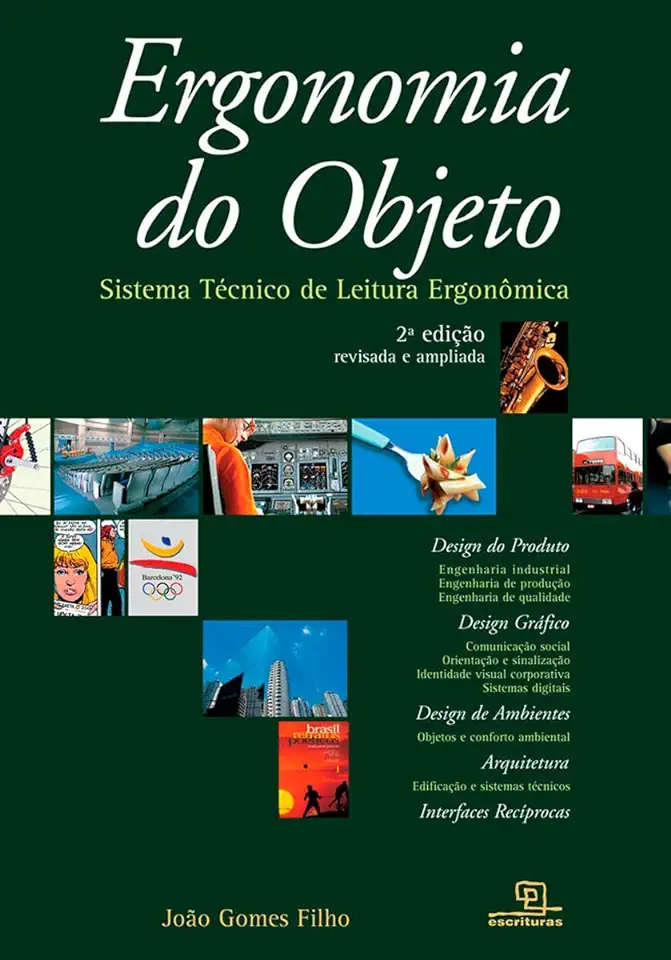
Object Ergonomics - João Gomes Filho
Object Ergonomics: Designing for User Comfort and Safety
Introduction
In today's fast-paced world, we interact with a wide variety of objects on a daily basis, from our smartphones and computers to our furniture and appliances. While these objects are designed to serve a specific purpose, they can also have a significant impact on our comfort and safety.
Object ergonomics is the study of designing objects that are comfortable and safe for people to use. It takes into account factors such as the user's physical characteristics, the task being performed, and the environment in which the object will be used.
Why is Object Ergonomics Important?
There are many reasons why object ergonomics is important. First and foremost, it can help to prevent injuries. When objects are not designed properly, they can put strain on our muscles, joints, and nerves, leading to pain, discomfort, and even serious injuries.
For example, a chair that is too high or too low can cause back pain, while a keyboard that is too far away can cause wrist pain. By designing objects that fit the human body, we can help to reduce the risk of these types of injuries.
In addition to preventing injuries, object ergonomics can also improve productivity and efficiency. When objects are comfortable and easy to use, we can work more efficiently and effectively. For example, a well-designed workstation can help to reduce fatigue and improve concentration, leading to increased productivity.
Finally, object ergonomics can also enhance our overall quality of life. When we are surrounded by objects that are comfortable and safe to use, we are more likely to feel happy and productive.
Principles of Object Ergonomics
There are a number of principles that can be used to design objects that are comfortable and safe for people to use. These principles include:
- Fit the human body: Objects should be designed to fit the average human body. This means taking into account factors such as the user's height, weight, and reach.
- Minimize force: Objects should be designed to require minimal force to operate. This can be done by using levers, pulleys, and other mechanical devices.
- Reduce repetition: Objects should be designed to minimize repetitive motions. This can be done by using automation, job rotation, and other techniques.
- Provide adjustability: Objects should be adjustable to accommodate different users. This can be done by using adjustable chairs, desks, and other furniture.
- Use clear and concise instructions: Objects should be accompanied by clear and concise instructions on how to use them. This can help to prevent accidents and injuries.
Applications of Object Ergonomics
Object ergonomics can be applied to a wide variety of objects, including:
- Furniture: Chairs, desks, and other furniture should be designed to fit the human body and minimize discomfort.
- Computers: Computers should be designed to be comfortable to use, with adjustable screens, keyboards, and mice.
- Tools: Tools should be designed to be easy to grip and use, with minimal force required.
- Appliances: Appliances should be designed to be easy to operate, with clear and concise instructions.
Conclusion
Object ergonomics is an important field of study that can help to improve the comfort, safety, and productivity of our lives. By following the principles of object ergonomics, we can design objects that are better suited to the human body and that can help us to live healthier, happier, and more productive lives.
Call to Action
If you are interested in learning more about object ergonomics, there are a number of resources available online. You can also find a number of books and articles on the subject at your local library.
If you are looking for a comprehensive guide to object ergonomics, I highly recommend the book "Object Ergonomics: Designing for User Comfort and Safety" by João Gomes Filho. This book provides a detailed overview of the principles of object ergonomics and how they can be applied to a wide variety of objects.
I encourage you to learn more about object ergonomics and to start applying its principles to your own life. By doing so, you can improve your comfort, safety, and productivity, and live a healthier, happier, and more productive life.